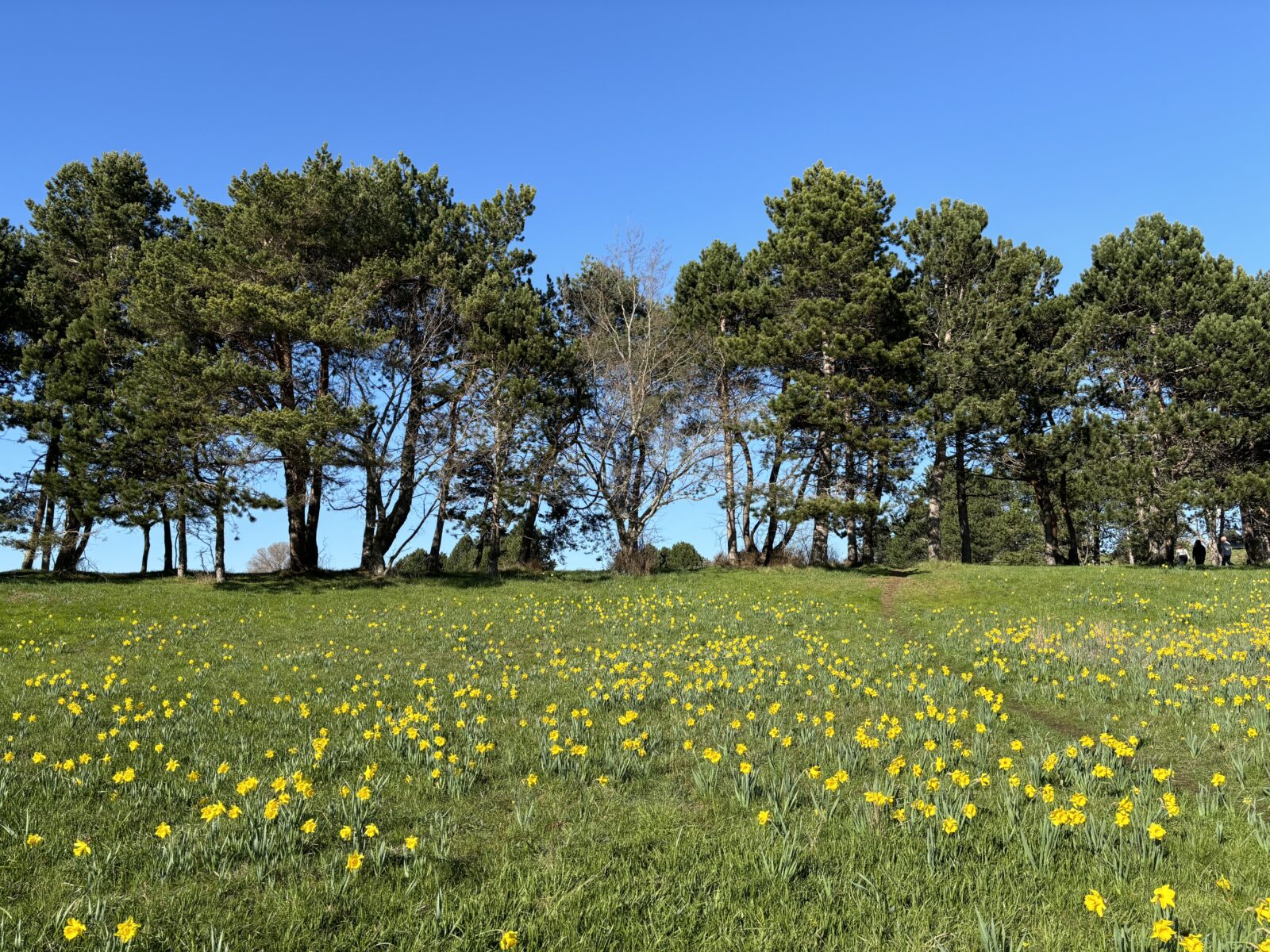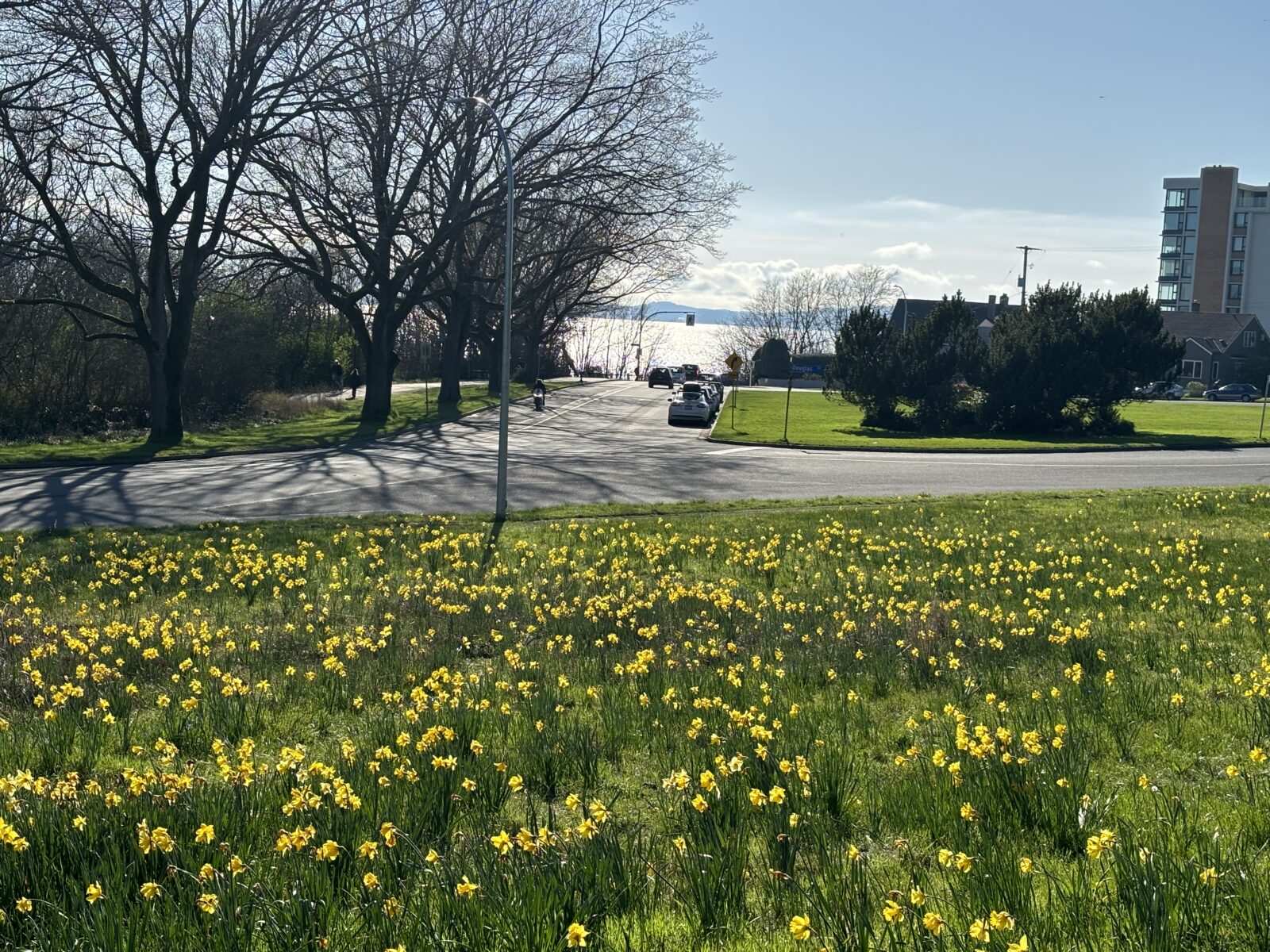
It feels odd to be writing about daffodils, an early sign of spring in Victoria, while I am sweltering in Panama City waiting for my cruise assignment to start tomorrow. Here the plants change with the season by blossoming and bearing seeds or fruit, and then they move on to the green state they stay in most of the year.
I spent most of my life in Southern California so my acquaintance with seasons there came only through a home high enough in the mountains to get snow and seasonal flowers in sunny spots. Even in San Diego, the jacarandas in the spring and the poinsettias in the late fall were reminders that plants know what season it is, even if the weather does not. It’s so different from what it is like to experience seasons in Canada, although my friends here, mostly originally from places like Montreal and Winnipeg, would laugh to hear me suggest that in Victoria we have what they think of as winter at all.
There’s something special to me about the season of cold and dark. Bare trees reveal their history in the shapes of their trunks and branches. If you hear bird song, the singer is probably visible on a bare twig, its nest revealing where the life it brought into this world began. Winter reveals what has already happened, some of it ancient, some of it as recent as a few months ago.
Most of all, I am moved in winter by the die-back of the bulbs. When I walk through a soggy field, I know they are there under the ground. They are resting, waiting for the future, for the right moment to come again. I am reminded of the last scene in Emile Zola’s Germinal, where the protagonist, Etienne Lantier, newly freed from a harrowing life as a coal miner, walks across a field knowing that deep beneath him the miners toil away. He thinks how the seeds of rebellion planted in their minds will someday cause them to rise up, but that day still lies in the future. It’s a heart-twisting image, not at all like the gentle slumber of the bulbs, but the potential power of life stirring beneath our feet is the same.
And then, one day I see the first snow drop, the first crocus and after a week or two the first of the many species of daffodils, then tulips. (The two photos here are from a spot a few blocks from my home.) After that, trees and plants that aren’t bulbs take center stage—cherry blossoms, camas, and in summer the wild sweet peas that warm my heart with memories of planting them as a child.
There’s much to think about in the story of the bulbs. They persevere by hiding. We often see such acts in humans as cowardly. Daffodils don’t stand and fight against summer. They retreat. Back underground they are equally at home. Their blossoms show us they are there, but the time when they are gone is equally important in their life. They are storing energy, growing, dividing, resting up for what must be very hard work to push up with tender new leaves through winter-hardened soil. Blooming is just one of the things they do, but unless you are a gardener, that is the only way we humans know them. Just as the only way we know each other is in whatever small part we choose to present to the world
William Wordsworth wrote a famous poem about coming across a field of daffodils dancing in a field. In the poem he is far from there, lying in bed, thinking about how that experience gladdened his soul. ‘And then my heart with pleasure fills/And dances with the daffodils.”
Mine too. But there is poetry in daffodils even when they are not dancing. Their winter solitude reminds us that it is healthy to have our own. We can’t bloom all the time, but when we do, there is such joy in it. And when we rest, recover, renew, there is peace in that, knowing that another part of us that loves the warmth of the sun will soon come out to take its turn in the ongoing story of our lives.

